Beachcombing is defined as searching for and collecting items of value, interest or utility along the seashore. This past week I spent several days beachcombing but, instead of collecting physical items, I collected photos.
I had the pleasure of exploring three different shorelines on “the Island”―the beloved Canadian province of Prince Edward Island, that is. The first area was along Charlottetown Harbour…
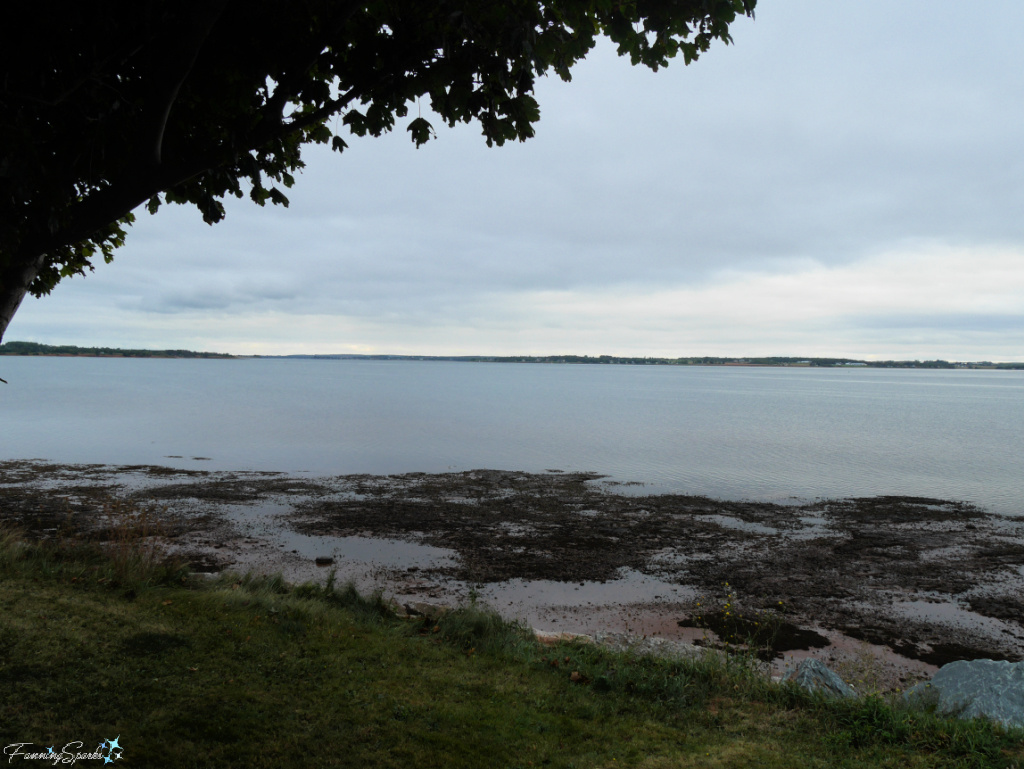
… in front of the cottage we rented for our visit.

The second shoreline I visited was Stratford’s Tea Hill Park on Hillsborough Bay.
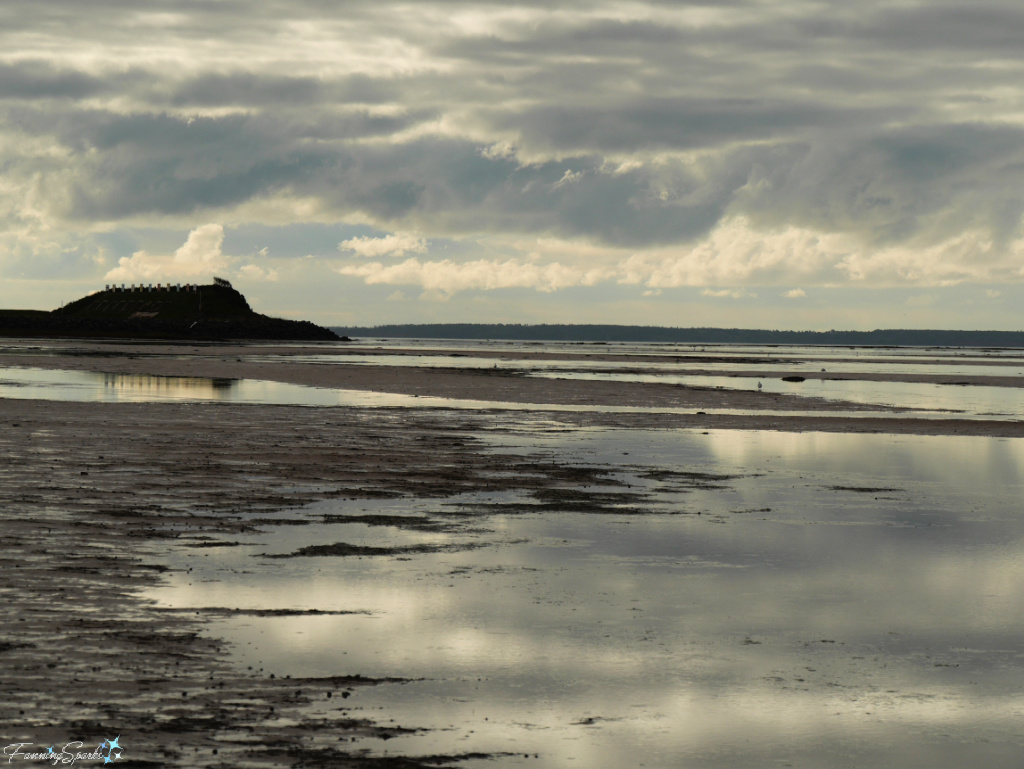
The third location was along the Island’s North Shore at Greenwich National Park where I strolled along the floating boardwalk over Bowley Pond…

… and explored the beautiful sandy shores at Greenwich Beach.
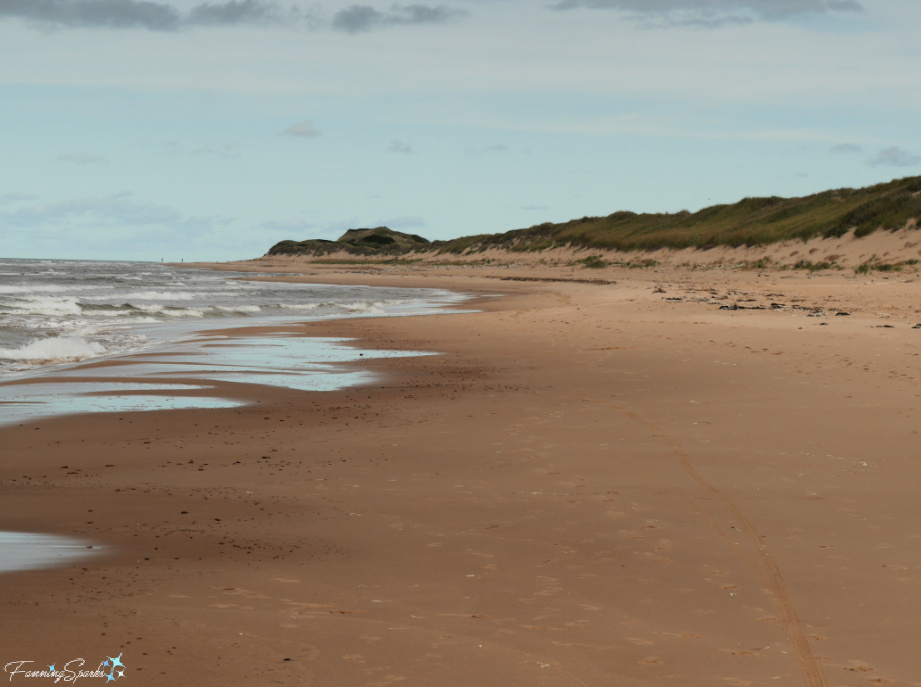
All three locations provided me with exciting natural discoveries. First, there were the birds foraging for food. Predictably, gulls were the most common.
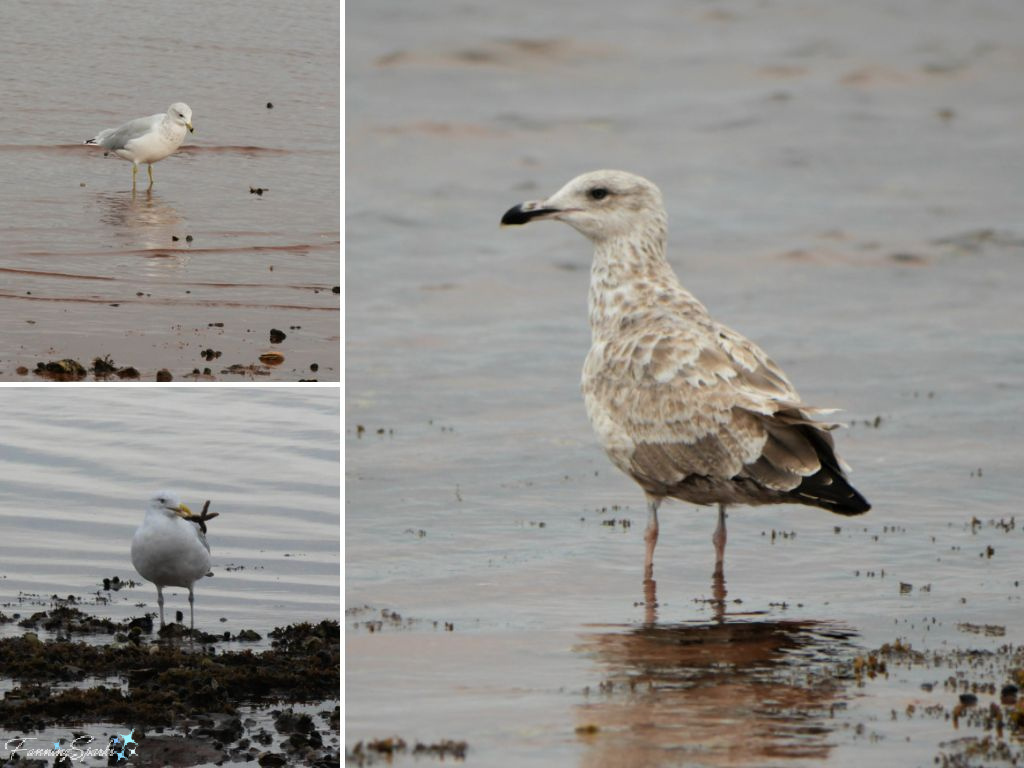
There were also quite a few crows especially along the Charlottetown Harbour.
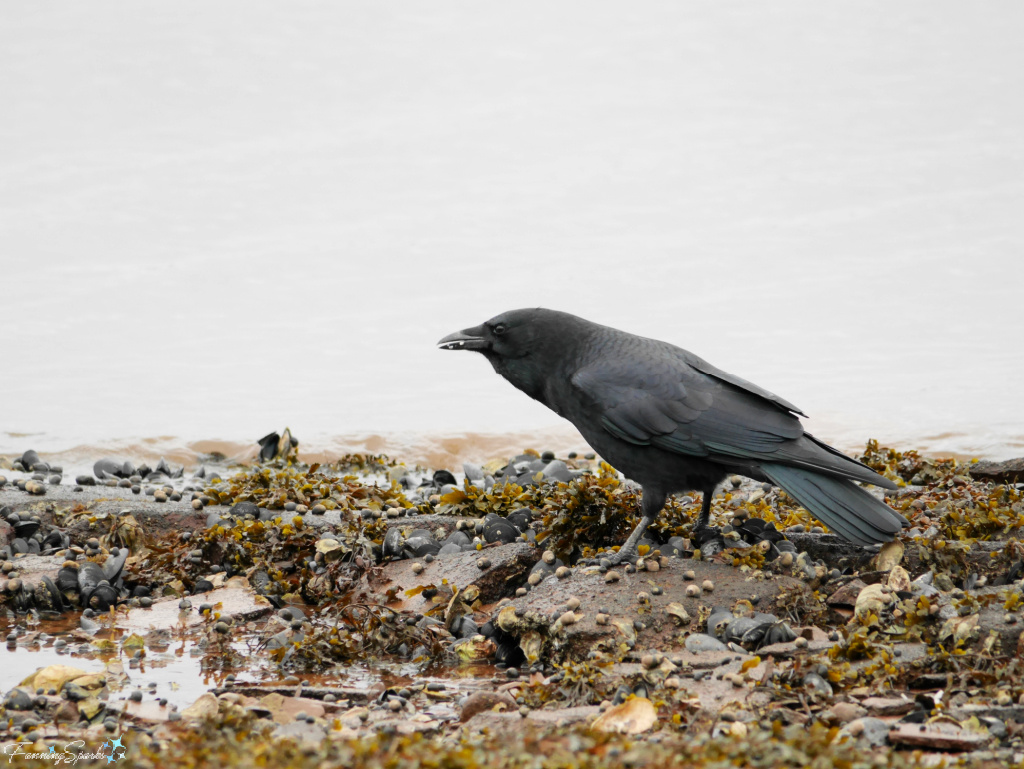
At Greenwich Beach, a small group of shorebirds, including these sanderlings, ran along the water’s edge looking for food.

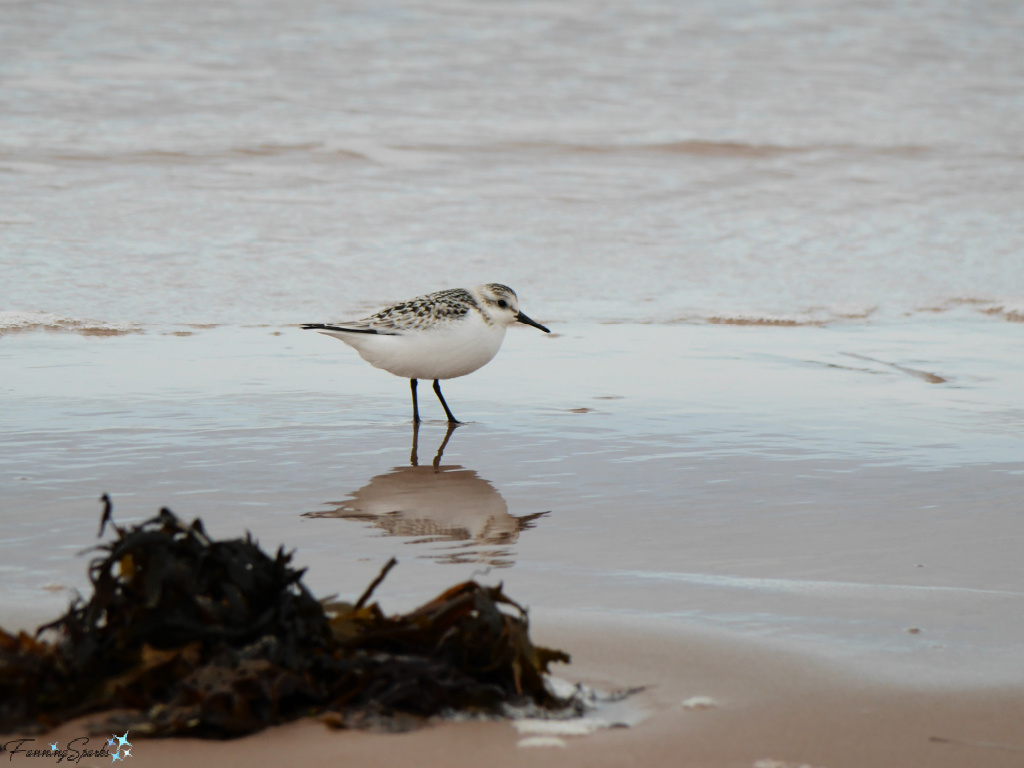
There were also a few charming little plovers.
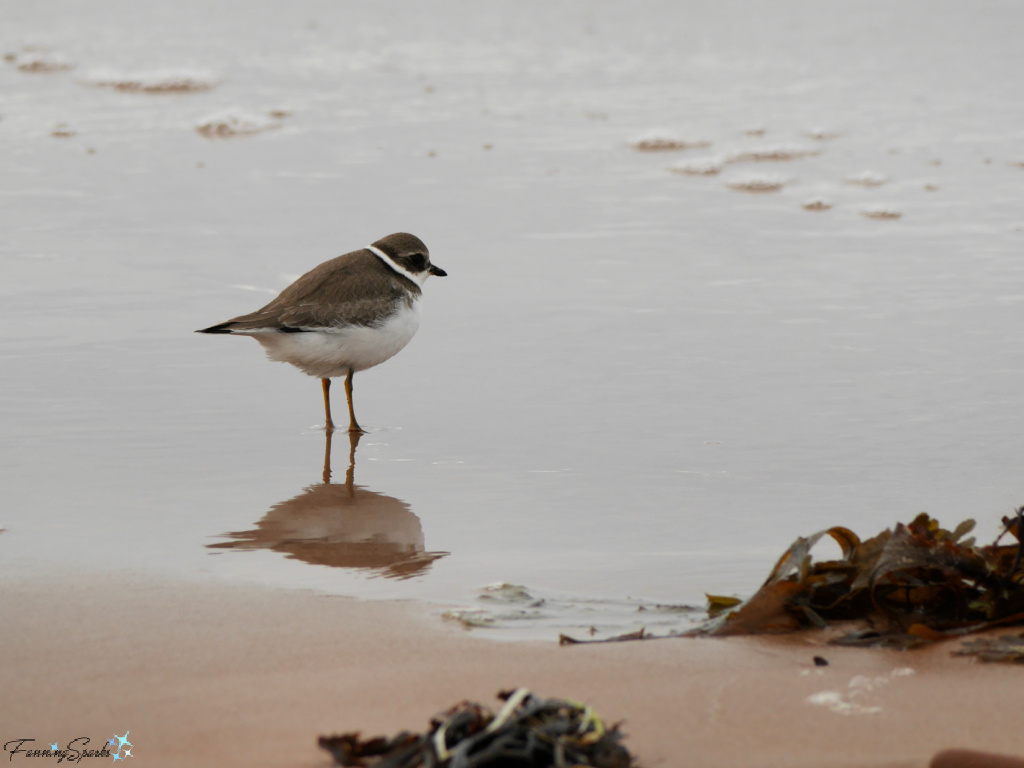
Herons, cormorants and geese rounded out the avian show. Of course, where there are birds, there are feathers.

A trip to the beach wouldn’t be complete without searching for the perfect seashell. Seashells are actually the exoskeletons of mollusks such as clams, conches and snails.
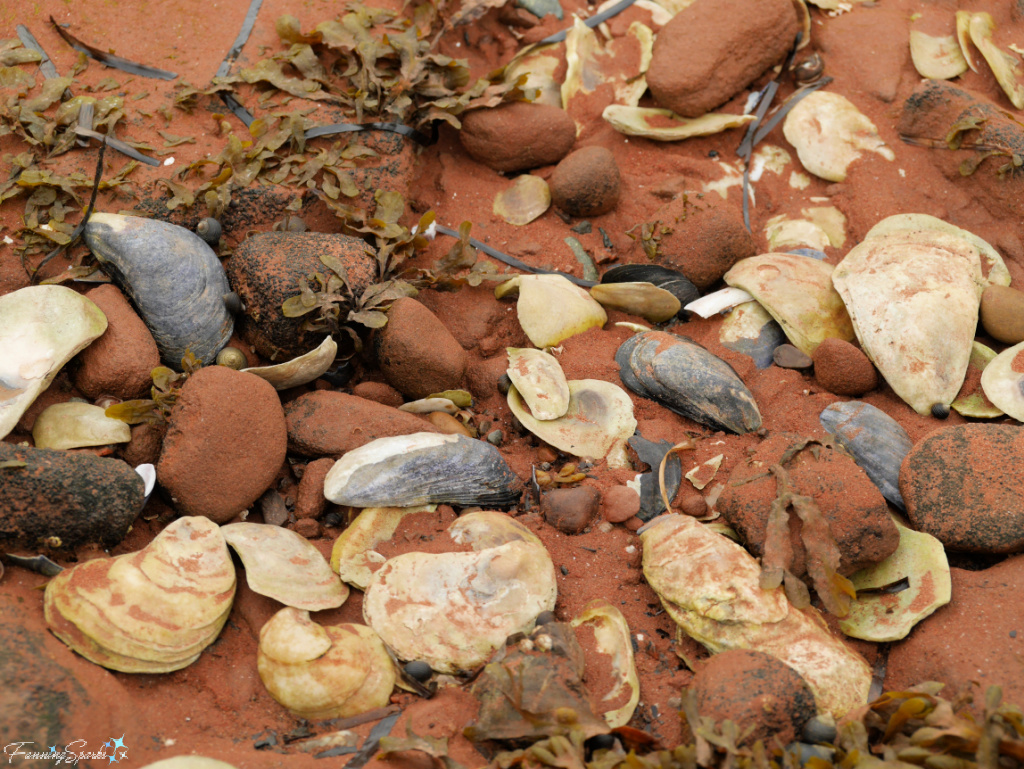
This purple-blue striped mussel shell caught my eye.
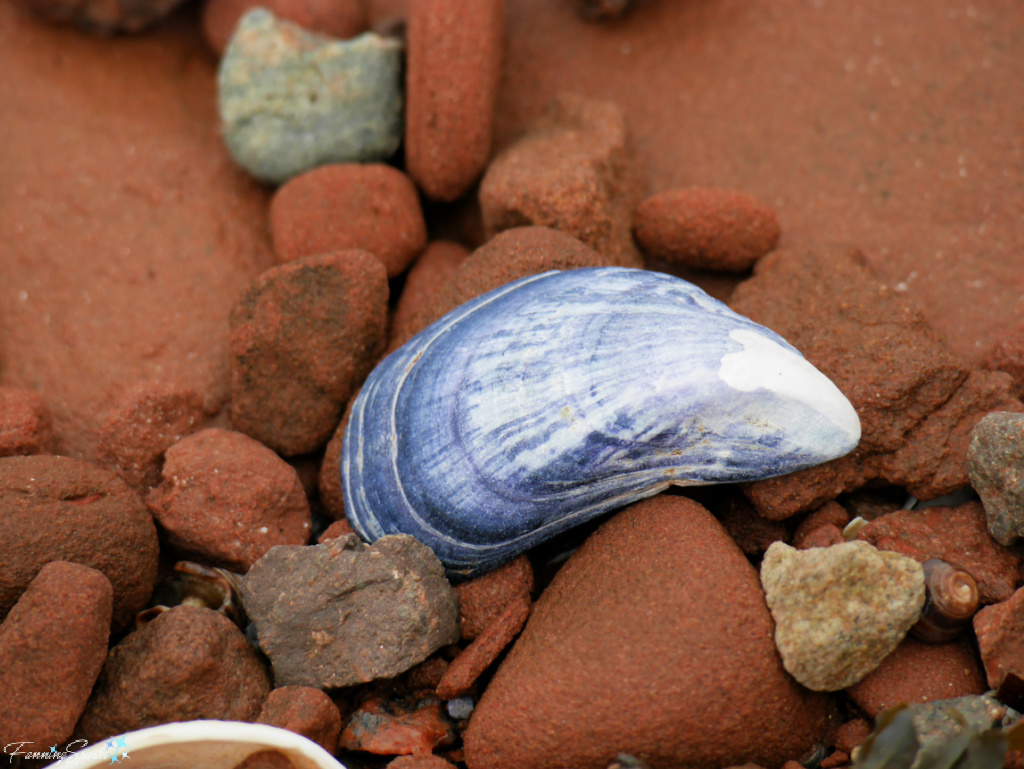
Mollusks with two-part shells, such as clams, mussels, oysters and scallops, are known as bivalves. Finding a bivalve with both halves intact, like this quahog, is rather unusual.

There were thousands of marine snails, see the tiny dark dots below, along the shore at Hillsborough Bay.
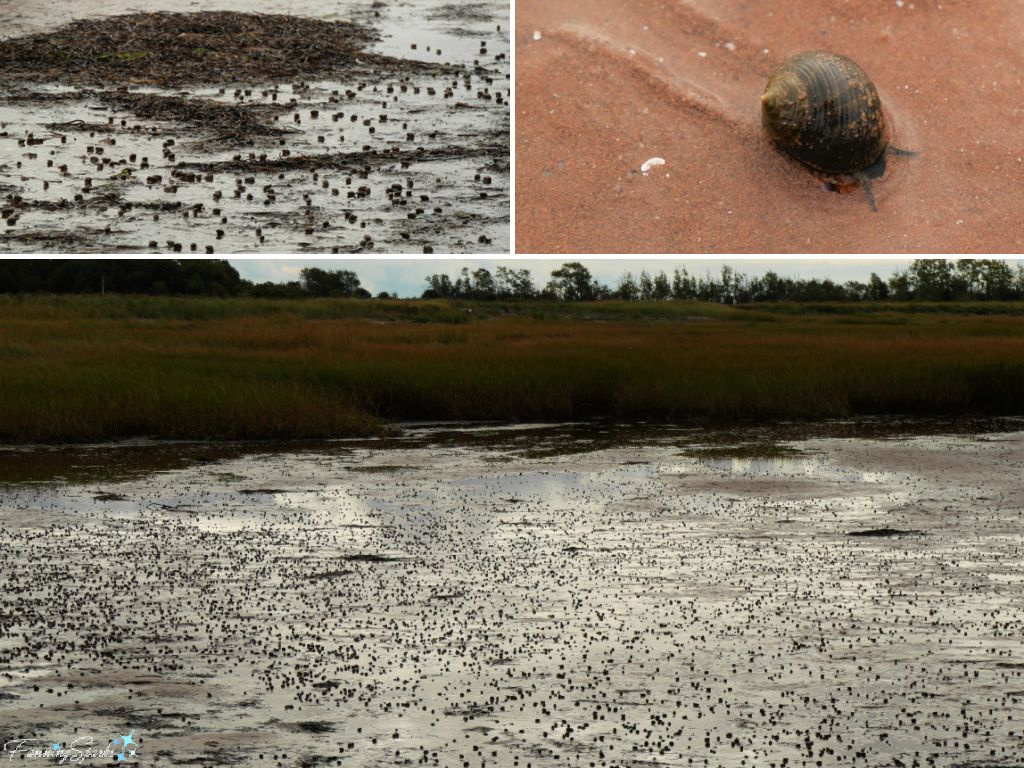
Mollusks with spiral-shaped shells, such as snails, conch, and whelks, are called Gastropods. This moonsnail shell may be broken but the spiral is sheer perfection!

Crabs, along with lobsters and shrimp, are crustaceans. But of the three, only crabs, such as the Atlantic Rock Crab shown below, will be found on the beach.
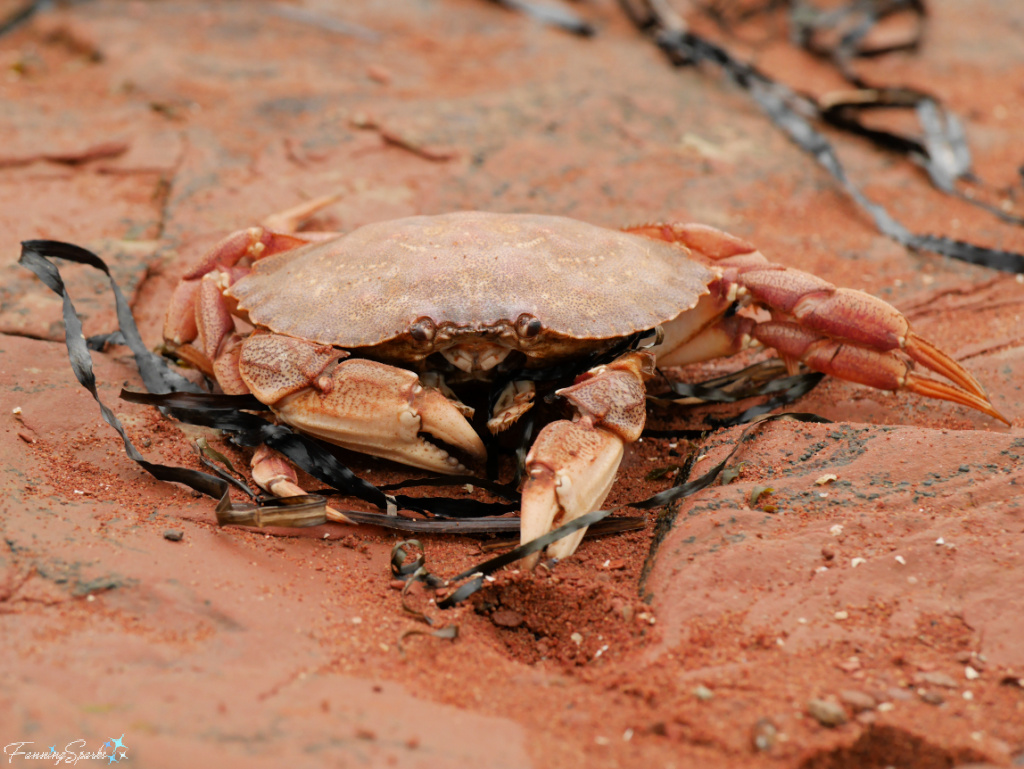
“Crabs cast off their shell as they grow, separating it from the soft body within and climbing out, leaving a complete moult behind” explains author Julie Hatcher in her article A Guide to Beachcombing. “It looks for all the world like a dead crab lying on the beach. Meanwhile the animal hides away while its skin hardens into a new, larger shell.”

Speaking of hiding, can you spot the crab in this next photo? It’s perfectly camouflaged into its surroundings.

It’s more visible from this next angle.

I’ve since learned this is a European Green Crab (Carcinus maenas) which is “a widespread invasive species, listed among the 100 of the World’s Worst Invasive Alien Species … it is native to European and North African coasts… but has colonised similar habitats” around the world reports Wikipedia.
Sea jellies, aka jellyfish, like this Lion’s Mane Jelly sometimes wash up onshore as this one did on Greenwich Beach.
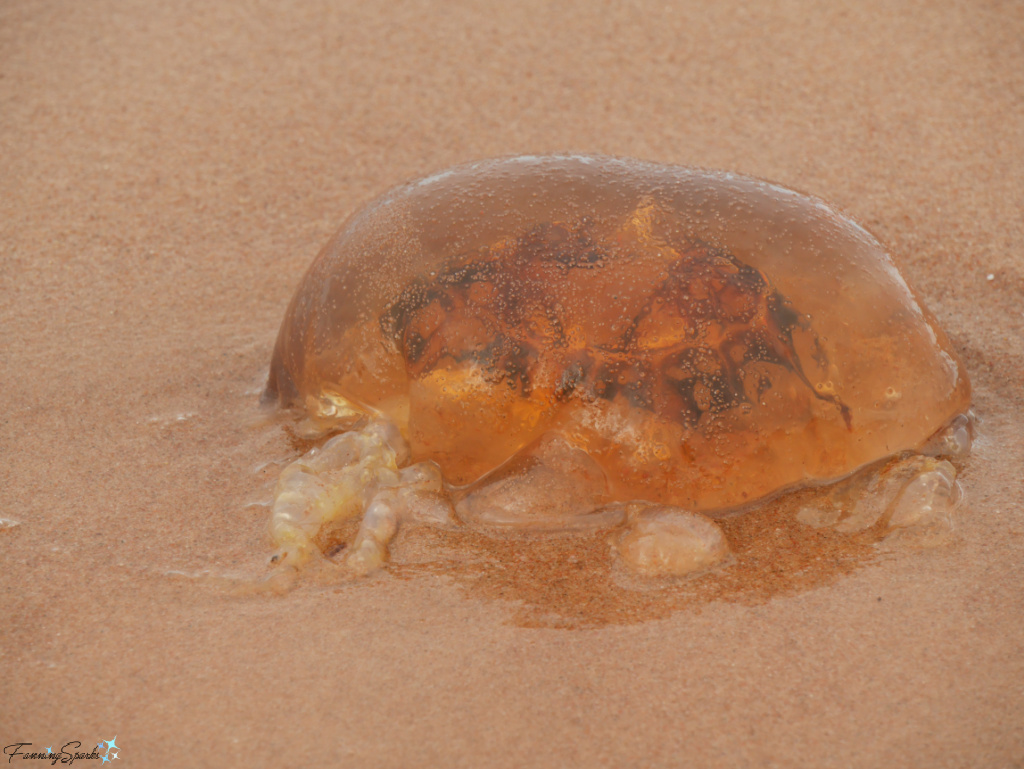
Common Sand Dollars, like the one shown below, are always a treasured find.
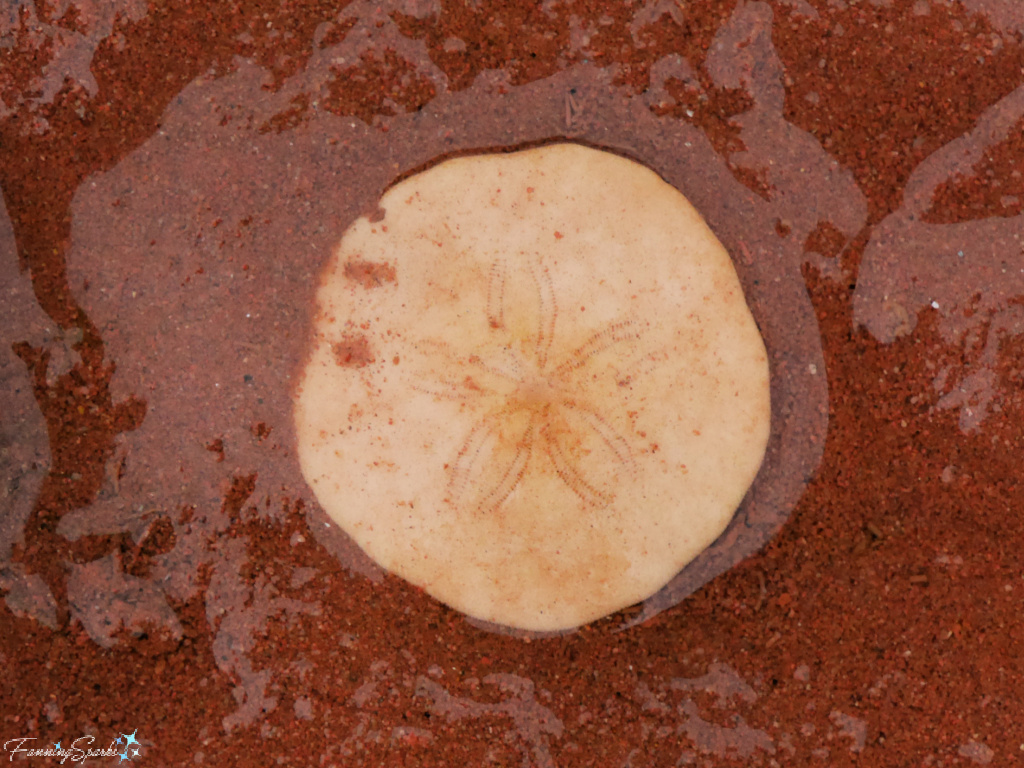
While most of my beachcombing discoveries were natural, there were a few human-made ones as well. At the Tea Hill Park in Stratford, for instance, I learned about a “living shoreline” which is a “nature-based approach to shoreline management. Living shorelines use native plants, logs and other natural materials to stabilize the shoreline, reduce shoreline erosion, maintain or restore coastal processes and habitat value, and provide storm protection” reported the informational sign on site.
After a little online investigation, I came across the CLIMAtlantic Coastal Adaptation Toolkit which focuses on Adapting to Climate Change in Coastal Communities of Atlantic Canada. The report cites the Tea Hill Park location as an example and explains “The construction involved the planting of native tree, shrub, and grass species along the bank and the upland path leading down to the beach; as it takes root and grows, this vegetation will help to reduce erosion and to infiltrate runoff from the upland. The beach access path was covered with wood chips to reduce the impact of foot traffic. Haybales and logs were put in place to protect the eroding bank face”.
This CLIMAtlantic graphic shows the continuum of green (soft) to gray (hard) shoreline protection techniques. I believe the one at Tea Hill would be categorized as “Edging”.
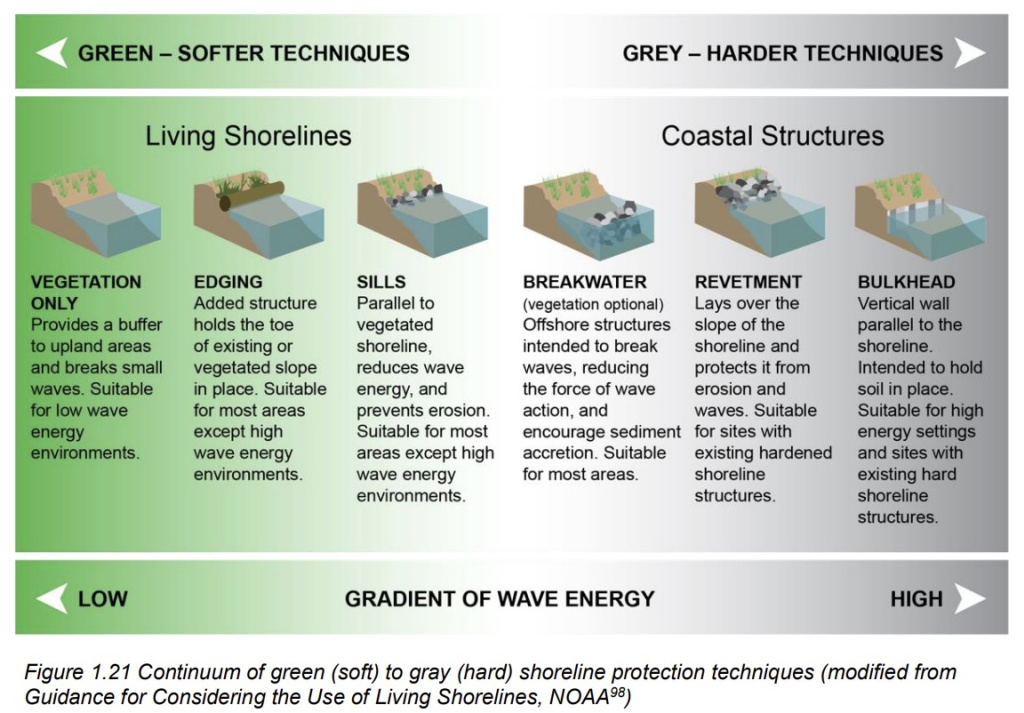
Here are a few borrowed photos showing the site before and during construction of the living shoreline.

And here it is three years later as I approached the beach on the footpath. The shoreline is covered in native vegetation and there was little evidence of erosion that I could see. This was quite noticeable because bordering properties showed the opposite.
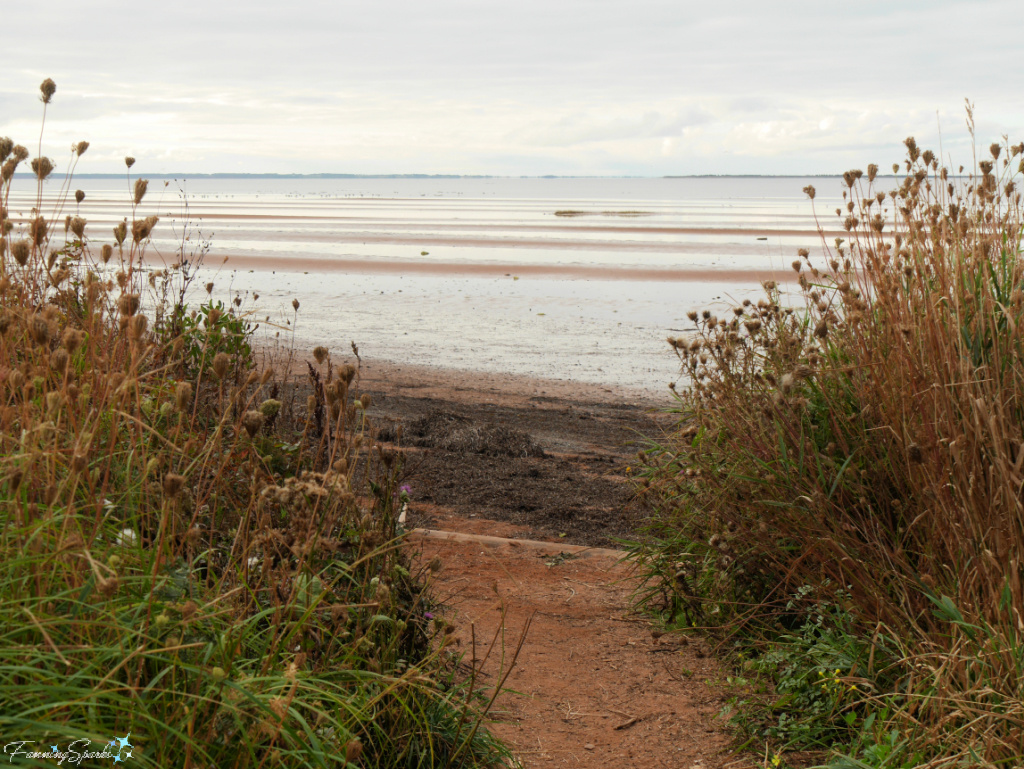
According to the CLIMAtlantic Coastal Adaptation Toolkit, “All of the [Atlantic Provinces’] coastal communities are vulnerable to the impacts of climate change to some extent. Sea level rise and storm surge causing coastal flooding are the dominant climate change impacts for coastal communities. … Coastal flooding and erosion are of particular concern, as the coastlines of the Atlantic Provinces are vulnerable to these impacts.”
Another discovery made during my beachcombing excursions was a #Coastie stand on the Greenwich Beach shoreline. The sign invites visitors to “become a citizen scientist” by positioning their smartphones on the stand and snapping a photo to submit to the #Coastie project. It’s pretty slick… photos can be submitted to the website address provided, submitted via the #Coastie submission portal by scanning the QR code provided or posted on social media with the hashtag provided.
The COASTIE program is a collaboration between Parks Canada and the University of Windsor. As explained on their website, “Rising sea levels, change in storm frequency and magnitude, and declining ice coverage are threats to the resiliency of our coastlines over the coming decades. Continual photographic monitoring allows coastal managers and researchers to create a time lapse series of erosion and recovery processes, furthering our understanding on the coastal dynamics at each Coastie location.”
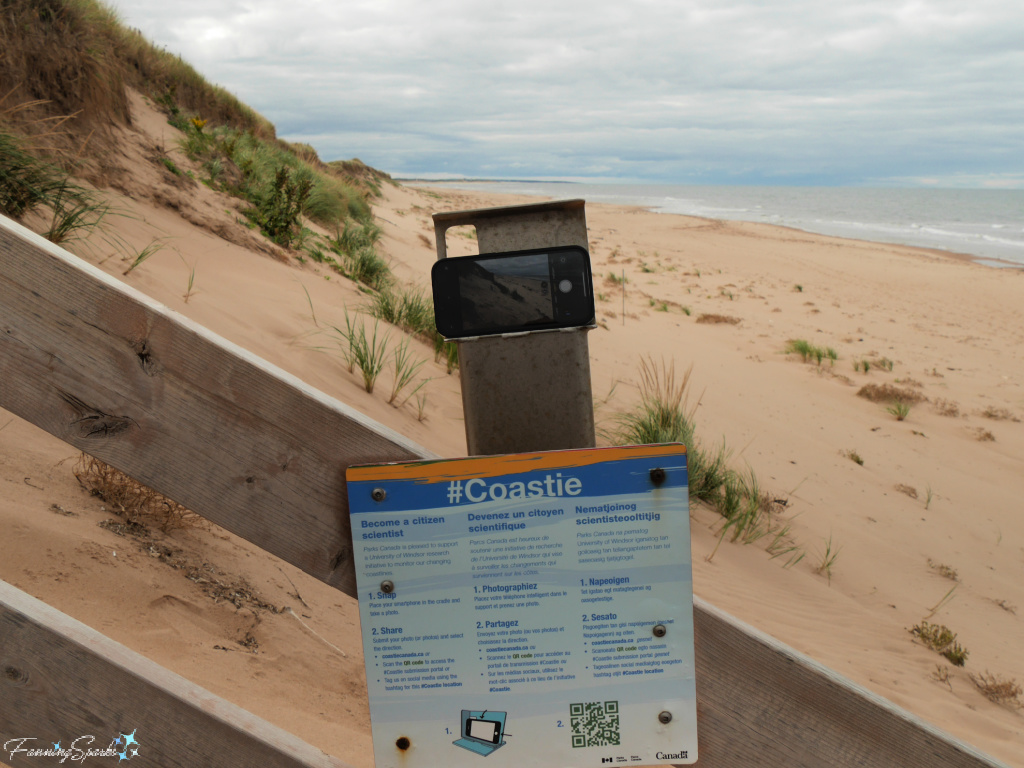
The message is clear―sea level rise caused by climate change is contributing to increased erosion and coastal flooding posing a serious threat to coastal communities.
More Info
You may notice I didn’t mention searching for sea glass. Please see my previous post In Pursuit of Sea Glass to learn more about this popular beachcombing activity.
Prince Edward Island (PEI) is one of the Atlantic Provinces located in Eastern Canada. It is Canada’s smallest and much beloved province. Check out the following websites to learn more about the locations mentioned in this blog post.
. Tea Hill Park on the Town of Stratford website
. Greenwich PEI National Park on the Parks Canada website.
The following online resources were consulted in the writing of this blog post:
. A Guide to Beachcombing article by Julie Hatcher published by Princeton University Press in May 2022.
. Take a Beach Walk book by Jane Kirkland published 2007 which is available here on Internet Archives.
. CLIMAtlantic Coastal Adaptation Toolkit Adapting to Climate Change in Coastal Communities of Atlantic Canada by Dr. Danika Van Proosdij and Jenna Miller and published Jan 2023.
. New Shoreline Installations in Stratford Raise Awareness about Erosion and Climate Change article by CBC News May 2022.
You can learn more about the #Coastie program on the Coastie Canada website.
Today’s Takeaways
1. Beachcombing is an easy outdoor activity which can be both entertaining and educational.
2. Beachcombing is defined as searching for and collecting items of value, interest or utility along the seashore.
3. Sea level rise caused by climate change is contributing to increased erosion and coastal flooding posing a serious threat to coastal communities.





Comments are closed.